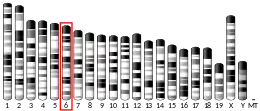| H1-8 | |||||||||||||||||||||||||||||||||||||||||||||||||||
|---|---|---|---|---|---|---|---|---|---|---|---|---|---|---|---|---|---|---|---|---|---|---|---|---|---|---|---|---|---|---|---|---|---|---|---|---|---|---|---|---|---|---|---|---|---|---|---|---|---|---|---|
| Identifiers | |||||||||||||||||||||||||||||||||||||||||||||||||||
| Aliases | H1-8, osH1, H1.8, H1oo, H1 histone family member O, oocyte specific, H1 histone family member O oocyte specific, H1.8 linker histone, H1FOO | ||||||||||||||||||||||||||||||||||||||||||||||||||
| External IDs | MGI: 2176207 HomoloGene: 51377 GeneCards: H1-8 | ||||||||||||||||||||||||||||||||||||||||||||||||||
| |||||||||||||||||||||||||||||||||||||||||||||||||||
| |||||||||||||||||||||||||||||||||||||||||||||||||||
| |||||||||||||||||||||||||||||||||||||||||||||||||||
| |||||||||||||||||||||||||||||||||||||||||||||||||||
| |||||||||||||||||||||||||||||||||||||||||||||||||||
| Wikidata | |||||||||||||||||||||||||||||||||||||||||||||||||||
| |||||||||||||||||||||||||||||||||||||||||||||||||||
Histone H1oo is a protein that in humans is encoded by the H1FOO gene.[5][6]
Function
Histones are basic nuclear proteins that are responsible for the nucleosome structure of the chromosomal fiber in eukaryotes. Nucleosomes consist of approximately 146 bp of DNA wrapped around a histone octamer composed of pairs of each of the four core histones (H2A, H2B, H3, and H4). The chromatin fiber is further compacted through the interaction of a linker histone, H1, with the DNA between the nucleosomes to form higher order chromatin structures. The protein encoded is a member of the histone H1 family. This gene contains introns, unlike most histone genes. The protein encoded is a member of the histone H1 family. The related mouse gene is expressed only in oocytes.[6]
It incorporates into sperm chromatin after fertilisation.[7]
References
- 1 2 3 GRCh38: Ensembl release 89: ENSG00000178804 - Ensembl, May 2017
- 1 2 3 GRCm38: Ensembl release 89: ENSMUSG00000042279 - Ensembl, May 2017
- ↑ "Human PubMed Reference:". National Center for Biotechnology Information, U.S. National Library of Medicine.
- ↑ "Mouse PubMed Reference:". National Center for Biotechnology Information, U.S. National Library of Medicine.
- ↑ Marzluff WF, Gongidi P, Woods KR, Jin J, Maltais LJ (November 2002). "The human and mouse replication-dependent histone genes". Genomics. 80 (5): 487–98. doi:10.1016/S0888-7543(02)96850-3. PMID 12408966.
- 1 2 "Entrez Gene: H1 histone family".
- ↑ Mizusawa Y, Kuji N, Tanaka Y, et al. (March 2010). "Expression of human oocyte-specific linker histone protein and its incorporation into sperm chromatin during fertilization". Fertil Steril. 93 (4): 1134–1141. doi:10.1016/j.fertnstert.2008.11.028. PMID 19147139.
Further reading
- Teranishi T, Tanaka M, Kimoto S, et al. (2004). "Rapid replacement of somatic linker histones with the oocyte-specific linker histone H1foo in nuclear transfer". Dev. Biol. 266 (1): 76–86. doi:10.1016/j.ydbio.2003.10.004. PMID 14729479.
- Strausberg RL, Feingold EA, Grouse LH, et al. (2002). "Generation and initial analysis of more than 15,000 full-length human and mouse cDNA sequences". Proc. Natl. Acad. Sci. U.S.A. 99 (26): 16899–903. Bibcode:2002PNAS...9916899M. doi:10.1073/pnas.242603899. PMC 139241. PMID 12477932.
- Tanaka Y, Kato S, Tanaka M, et al. (2003). "Structure and expression of the human oocyte-specific histone H1 gene elucidated by direct RT-nested PCR of a single oocyte". Biochem. Biophys. Res. Commun. 304 (2): 351–7. doi:10.1016/S0006-291X(03)00610-7. PMID 12711322.
- Tanaka M, Kihara M, Hennebold JD, et al. (2005). "H1FOO is coupled to the initiation of oocytic growth". Biol. Reprod. 72 (1): 135–42. doi:10.1095/biolreprod.104.032474. PMID 15371275.
- Gao S, Chung YG, Parseghian MH, et al. (2004). "Rapid H1 linker histone transitions following fertilization or somatic cell nuclear transfer: evidence for a uniform developmental program in mice". Dev. Biol. 266 (1): 62–75. doi:10.1016/j.ydbio.2003.10.003. PMID 14729478.
This article incorporates text from the United States National Library of Medicine, which is in the public domain.



